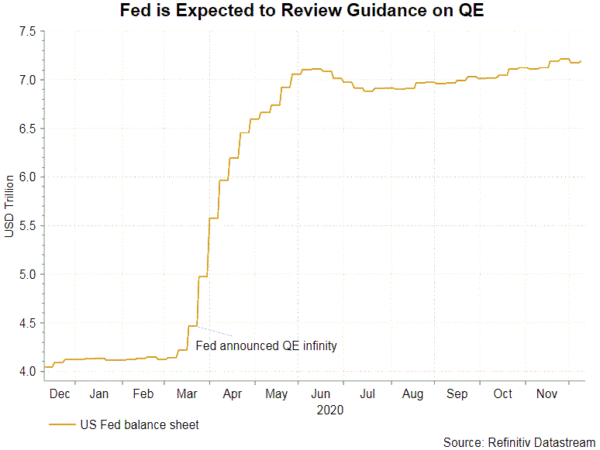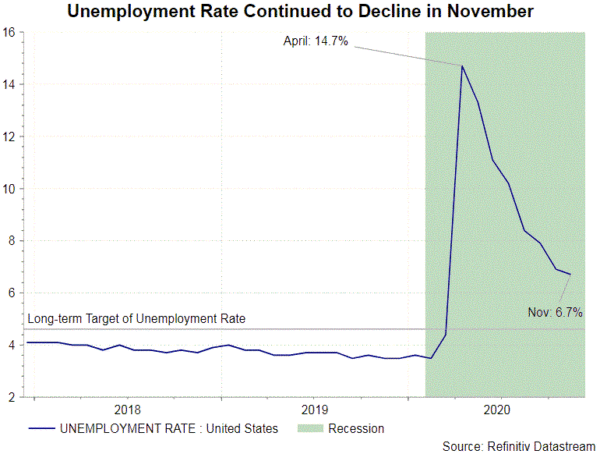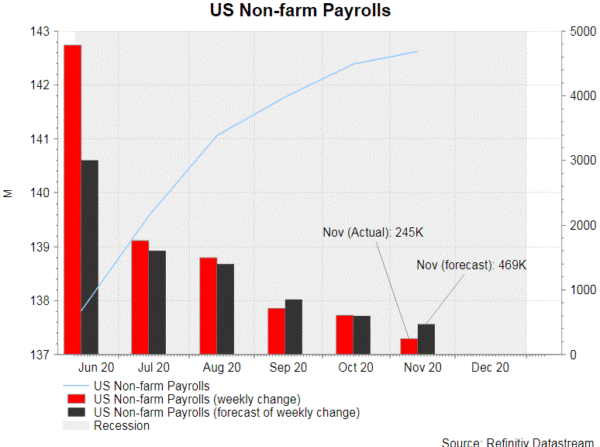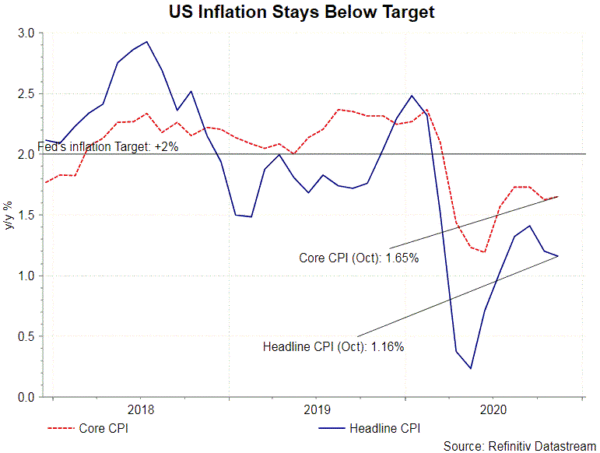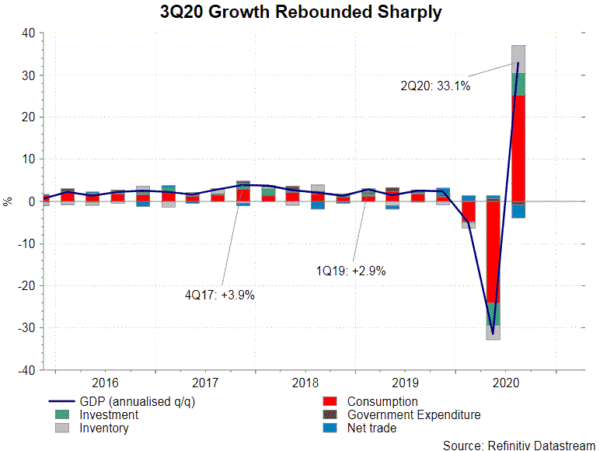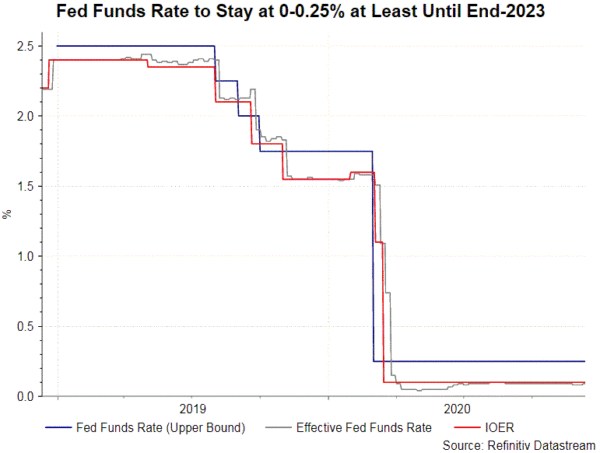At the last meeting of the year, we expect the Fed to be more cautious about the near-term outlook, while more optimistic over the longer-term. The focus of the meeting will be on the adjustment of the forward guidance about the asset purchase program. It will be a qualitative, outcome-based guidance as “most” members favored. The meeting statement will be accompanied by the updated economic projections and median dot plots about the policy rate outlook. For the former, thanks to the vaccine news, the Fed might upgrade GDP growth and inflation forecasts for 2021. We expect the majority of members would project no rate hike until end-2023. Yet, it is possible that more members would anticipate an increase before that, when compared with the last projections.
Economic data since the last meeting suggested that economic recovery remained underway. Nonfarm payrolls increased +245K in November, weaker than consensus of +469K and October’s +610K additions. The unemployment rate slipped -0.2 ppt to 6.7%. Average wage growth steadied at +4.4% during the month. On inflation, headline CPI steadied at +1.2% y/y , beating consensus of +1.1%. Core CPI also stayed unchanged at +1.6%. Meanwhile, GDP expanded at an annualized rate of +33.1% q/q in 3Q20 (unrevised). The resurgence of the coronavirus cases since the last November might lead to more caution in the near-term economic developments. However, the positive vaccine news signals that policymakers could be more upbeat about the growth in 2021.
As suggested in the November meeting minutes, many members believed that “at some point the Committee might convey additional guidance about the future path of asset purchases”. It was also revealed that “most” participants favored moving to “qualitative outcome-based guidance” that would involve tapering and ending purchases “sometime before” increasing the funds rate. Relevant changes to the forward guidance will likely be seen at this week’s meeting. We expect the “qualitative outcome-based guidance” will be similar to the one about the policy rate outlook. Policymakers will likely pledge to maintain the QE program until the job market is on track to reach maximum employment and inflation is on track to reach 2%. The November meeting also involved discussion about various options of the asset purchase program, including shifting “the composition, the duration, the size, and the life cycle of the program”. Increasing the average maturity of purchases is a close call.
Other than this, the Fed should leave all the monetary policy measures unchanged: The Fed funds rate should stay unchanged at 0-0.25% and asset purchases at US$120B per month.




